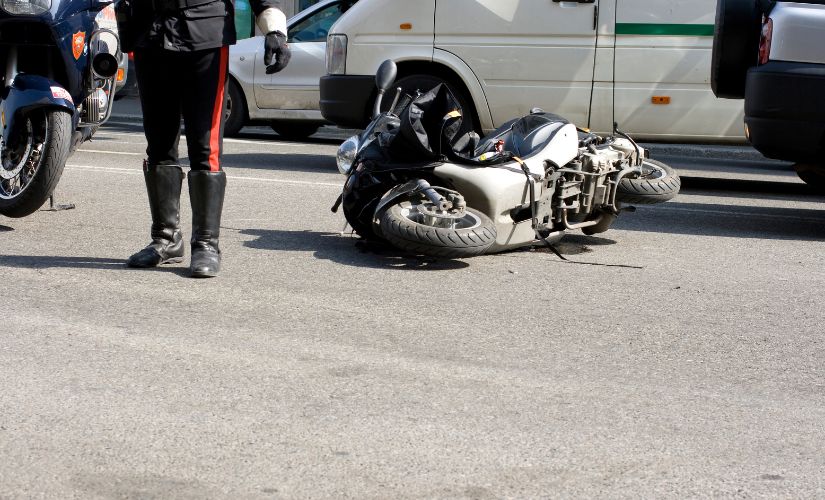Motorcycle accidents are among the most devastating types of traffic collisions, often resulting in serious injuries or fatalities due to the lack of protection that motorcycles offer compared to other vehicles. In the aftermath of a crash, gathering evidence becomes one of the most critical steps to building a strong personal injury case. Whether you’re pursuing a claim through insurance or filing a lawsuit, the quality and quantity of the evidence you provide can greatly influence the outcome. Understanding which types of evidence are most important and how to collect them can significantly strengthen your case and increase your chances of receiving fair compensation.
Why Evidence Matters in Motorcycle Accident Claims
Motorcyclists are especially vulnerable in accidents, and unfortunately, many insurance companies are quick to assign fault to the rider without fully investigating the circumstances. This bias means that solid, objective evidence is vital to proving liability, demonstrating the severity of injuries, and recovering the maximum compensation. In a legal setting, it’s not enough to simply say you were wronged. You must prove it, and the strength of your evidence can make or break your case.
Police Reports and Official Documentation
Among the most foundational pieces of evidence is the official police report. When an accident is reported and officers arrive at the scene, they are tasked with collecting initial facts, documenting the conditions, and assessing who may be at fault. These reports typically include information such as the names of involved parties, weather and road conditions, diagrams of the crash scene, and any citations issued. Statements from the drivers and witnesses may also be recorded, which can help to support your version of the events. While not always definitive, police reports carry weight and can set the tone for how an insurance company or court evaluates your claim.
Photographic and Video Evidence
In today’s world, smartphones have made it easier than ever to capture visual evidence, and this can be incredibly impactful in a motorcycle accident case. Photographs and videos taken at the scene provide an immediate, unfiltered view of the damage, injuries, and environmental factors. They can capture crucial details like skid marks, broken parts, license plates, nearby signage, and weather conditions. These visuals can be used later to reconstruct the accident, identify negligence, or dispute misleading claims by the other party. In some cases, nearby surveillance cameras or dashcams from bystanders or your own vehicle can provide continuous footage that reinforces your version of what happened.
Eyewitness Testimonies
Having an unbiased third-party witness can significantly help a motorcycle accident case. Eyewitnesses can provide a clear narrative of what they saw and often offer perspectives that neither party can provide. Their statements can validate your account, refute incorrect claims made by the other driver, or confirm whether traffic laws were violated. Because memory fades quickly, it’s important to collect contact information and obtain a statement from witnesses as soon as possible. An attorney can follow up with them later to prepare detailed accounts or even call them to testify in court if necessary.
Helmet and Gear Analysis
The condition of your helmet and protective riding gear can also serve as important evidence. Helmets, jackets, gloves, and boots may show signs of impact or damage that can help prove how the accident occurred and how violent the collision was. A visibly cracked helmet or torn riding jacket can demonstrate the severity of the crash. Furthermore, showing that you were wearing proper safety gear reinforces that you were acting responsibly, which can be crucial in states where comparative negligence may reduce compensation if the injured party is partially at fault.
Medical Records and Injury Documentation
Perhaps no evidence is more important than the documentation that supports your physical injuries. After a motorcycle accident, you should seek immediate medical care—not only for your health but also for your legal case. Medical records, including emergency room visits, doctor evaluations, test results, and treatment plans, are necessary to establish the extent and cause of your injuries. Additionally, bills, receipts, and ongoing treatment notes help to quantify your financial losses. Keeping a journal of your pain levels, emotional challenges, and limitations in daily life can also help illustrate the long-term impact of your injuries.
Surveillance and Dashcam Footage
Security cameras from nearby businesses, homes, or traffic intersections can offer unbiased and detailed footage of the accident. This evidence can help confirm critical elements like vehicle speed, right-of-way, or driver behavior such as texting, failing to stop, or swerving without signaling. If your motorcycle or another involved vehicle had a dashcam installed, that footage can also serve as a reliable account of the moments leading up to and during the accident. Because many surveillance systems only store footage for a limited time, it’s important to act quickly and request copies before the data is erased.
Vehicle Damage and Repair Documentation
The condition of your motorcycle after the crash can speak volumes about the severity of the impact. Having your vehicle evaluated by a certified mechanic or collision specialist will provide a professional assessment of the damage. Repair estimates, photos of the bike before and after the crash, and receipts for any parts replaced or labor performed can all be submitted as part of your evidence. If the motorcycle is declared a total loss, records showing its pre-accident condition and market value are also important when calculating property damages.
Accident Reconstruction Reports
In some cases, especially when liability is contested or multiple parties are involved, accident reconstruction experts may be brought in. These professionals analyze the physics of the accident using vehicle positions, impact angles, road conditions, and damage patterns to recreate what happened. They can determine the speed of the vehicles, whether traffic laws were violated, and how various factors contributed to the crash. Their scientific analysis and expert testimony often carry significant weight in court, especially when technical or conflicting claims are being argued.
Cell Phone and GPS Records
If there’s suspicion that the other driver was distracted at the time of the accident, cell phone records may be used to show whether they were texting, calling, or using apps while driving. This kind of evidence can be subpoenaed by an attorney and may prove negligence. GPS data, either from mobile devices or in-vehicle navigation systems, can show the location and route of a vehicle at the time of the crash. If you use a motorcycle trip-tracking app, that data can also validate your path and speed.
Expert Medical Testimony
While medical records show the facts of your injury, expert medical testimony helps explain those facts in a more persuasive way. A doctor or specialist can describe how the injuries occurred, whether they are permanent or disabling, and what your long-term recovery might look like. They can also testify about the pain you’re experiencing and how your ability to work or perform daily tasks has been affected. This expert input is particularly useful when seeking compensation for future medical care, lost earning capacity, or pain and suffering.
Insurance Communication Records
It’s vital to document all interactions with insurance companies throughout the claims process. This includes emails, phone calls, written letters, and claim submission forms. Insurance adjusters may sometimes try to minimize your claim or delay payments. By keeping a detailed log of all correspondence, you’ll have a clear record of how the insurer responded, what was said, and whether any promises were made or broken. These records can be used to support a claim of bad faith if the insurer does not act fairly.
Documentation of Lost Wages
If your injuries caused you to miss work, lose income, or alter your employment in any way, you need documentation to support these losses. Pay stubs from before the accident, letters from your employer confirming your time off, and income tax forms can all help establish the financial impact. For those who are self-employed or run a business, client cancellations, financial logs, and business records may demonstrate the disruption caused by the accident. In cases of long-term disability, evidence that shows your inability to continue in your profession is crucial to recovering compensation for lost future income.
Why Timeliness Is Essential
Evidence can be lost, destroyed, or compromised quickly after an accident. Skid marks may disappear within hours, damaged vehicles may be repaired or towed away, and witnesses may become unreachable. Acting fast not only protects your health and well-being but also ensures that valuable evidence is preserved while it’s still fresh and accessible. That’s why contacting a motorcycle accident attorney right away is one of the most important decisions you can make.
Contact Motorcycle Accident Attorney Orange County
If you’ve been injured in a motorcycle accident in Orange County, having an experienced legal team by your side can make all the difference. A knowledgeable attorney will help you gather and organize the most important evidence, negotiate aggressively with insurance companies, and pursue full compensation for your injuries, property damage, and financial losses. Don’t leave your case to chance or delay until critical evidence disappears. Contact Motorcycle Accident Attorney Orange County today for a free consultation and take the first step toward securing the justice and compensation you deserve.




